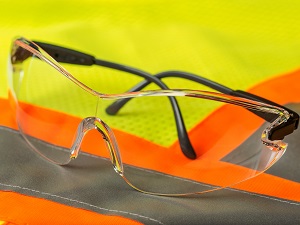According to the Centers for Disease Control and Prevention (CDC), each day about 2000 U.S. workers have a job-related eye injury that requires medical treatment. About one-third of those injuries are treated in hospital emergency rooms and more than 100 of those injuries result in one or more days of lost work.

Workers can get particles of dust, metal, wood, glass, concrete, plastic or other hard substances in their eyes. In addition, chemicals, acids, sparks, hot oil, fire and steam are also eye hazards.
OSHA Construction Standard 1926.28(a) The employer is responsible for requiring the wearing of appropriate personal protective equipment in all operations where there is an exposure to hazardous conditions or where this part indicates the need for using such equipment to reduce the hazards to the employees.
OSHA General Industry Standard 1910.133(a)(1) The employer shall ensure that each affected employee uses appropriate eye or face protection when exposed to eye or face hazards from flying particles, molten metal, liquid chemicals, acids or caustic liquids, chemical gases or vapors, or potentially injurious light radiation.

OSHA General Industry Standard 1910.132(d)(1) The employer shall assess the workplace to determine if hazards are present, or are likely to be present, which necessitate the use of personal protective equipment (PPE).
Impact hazards are those that result from flying or falling objects, or sparks striking the eye. Eye protection for these hazards are safety spectacles with side shields or goggles.
Heat injuries may occur to the eye and face when workers are exposed to high temperatures, splashes of molten metal, or hot sparks. Eye protection for these hazards are safety spectacles with special-purpose lenses and side shields or goggles.
Chemical injuries often result from an inappropriate choice of PPE that allows a chemical substance to enter from around or under protective eye equipment. Eye protection for these hazards are goggles, face shields and eyewash stations.

OSHA Construction Standard 1926.28(a)(1) Employees shall be provided with eye and face protection equipment when machines or operations present potential eye or face injury from physical, chemical, or radiation agents.
- Safety glasses must be rated ANSI Z87.1.
- Prescription lenses must also be rated ANSI Z87.1 or safety glasses will be required to be worn OVER prescription glasses.
.jpeg)

